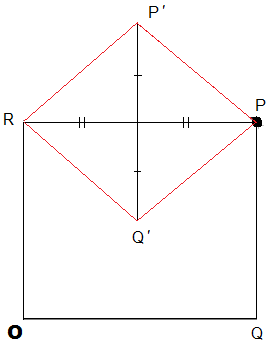Math Is Fun Forum
You are not logged in.
- Topics: Active | Unanswered
#101 Re: Help Me ! » Inequality » 2010-12-05 05:36:24
I have never heard of lagrangian multipliers. Can you post a link where i can learn the basics of it?
#102 Re: Help Me ! » Inequality » 2010-12-05 00:10:02
You are right.
I did it using am gm inequality. Thanks for your time.
#103 Re: Help Me ! » Inequality » 2010-12-04 23:21:57
I know that but how did you get the answer?
Yes, you have read the question right.
#104 Help Me ! » Inequality » 2010-12-04 23:03:45
- 123ronnie321
- Replies: 43
x,y,z>0 and are real and satisfy x + y + z = 1
Find minimum value of {(1/x)+1}{(1/y)+1}{(1/z)+1}.
#105 Re: Exercises » The Nth term and Algebraic Equations (Factorizing/Expanding) » 2010-12-04 22:42:32
#106 Re: Exercises » The Nth term and Algebraic Equations (Factorizing/Expanding) » 2010-12-04 22:33:55
#107 Re: Maths Is Fun - Suggestions and Comments » College Algebra - Volunteers Wanted » 2010-12-03 22:50:43
College Algebra is very nice and helpful.!!!
Can you write a similar article on vector algebra?
#108 Re: Help Me ! » Geometry » 2010-12-02 01:47:04
The longest side will be the hypotenuse.
Use the Pythagoras theorem to find the other side.....
This link will help you understand the basics of a triangle.
http://www.mathsisfun.com/triangle.html
#109 Re: Help Me ! » Calculus: Limit » 2010-11-30 22:53:45
you are right. the limit does not exist.
draw a graph of (x-2)/(x-1) and you will know better.
#110 Re: Maths Is Fun - Suggestions and Comments » Systems of Linear Equations » 2010-11-30 22:36:42
#111 Re: Introductions » Hi everyone » 2010-11-21 21:55:36
Thanks bobby. Yes, I will never give up on my guitar.
I have been here for over a month now and it feels good to have distant yet close friends.
Bobby, are you a student? professor? ???
#112 Re: This is Cool » Geometry problem » 2010-11-21 04:51:33
I am using your figure to solve this.
let the midpoint of PR be M
Let OQ = t < 2a
Let PQ = k.

PQ = P`Q` = k = 2P'M
PR = OQ = t = 2PM
PM^2 + P`M^2 = P`P^2 = a^2 ... Pythagoras theorem
therefore, k^2 + t^2 = (2a)^2. which is a circle if we make the following assumptions-
Let OQ act like x axis and and OR as Y axis.
Co ordinates of pt P are k,t.
#113 Introductions » Hi everyone » 2010-11-21 04:13:50
- 123ronnie321
- Replies: 8
Hi
I am an 18 year old Indian student.
I am an IIT aspirant and that is why i have joined this website - to improve my maths and learn some lessons of life.
I also like Physics and i love playing my guitar.
#114 Re: Help Me ! » Co-ordinate Geometry » 2010-11-21 03:55:50
Ok,
bob and sameer,
to be honest i am not fully satisfied with either of your answers although they are correct. I think i should be more clear with what i am asking.
Can you say which one is obtuse angle bisector and which one acute just by putting some conditions on a,b,c,p,q,r. Like a computer programme.
If numerical values are given i am able to solve. This is what once our teacher had asked us.
#115 Re: Exercises » Is this cool with you? » 2010-11-21 03:29:40
Hi bobby,
sorry,
The roots of above equation are real and are -2, 1 + sqrrtt(5), 1 - sqrrtt(5).
and they do satisfy the conditions of the problem.
#116 Re: Help Me ! » Co-ordinate Geometry » 2010-11-16 19:27:38
thanks bob
yes, graphical method is the best.
#117 Re: Exercises » Challenge » 2010-11-16 19:25:56
hi bobby
i tried condensing those series and i got the result very similar to what you posted. I must have made some silly error while calculating.
i wrote the series of e^x, e^wx & e^(w^2)x {where w = complex cube root of unity} and added the three......
#118 Help Me ! » Co-ordinate Geometry » 2010-11-15 03:33:21
- 123ronnie321
- Replies: 6
the angle bisector of two lines ax + by + c = 0 & px + qy + r = 0
is the locus of pts whose perpendicular distance from both lines is same.
We write this mathaematically as
|(aX + bY + c)/sqrrt(a^2 + b^2)| = + or - |(pX + qY + r)/sqrrt(p^2 + q^2)|
How do we differentiate between the two???
ie which one is acute angle bisector and which one is obtuse????
#119 Re: Exercises » Challenge » 2010-11-15 03:17:57
i did it this way
#120 Exercises » Challenge » 2010-11-13 01:41:55
- 123ronnie321
- Replies: 7
All u hv to do is find functions satisfying -
f` = g
g`= h
h`= f
f,g,h are different functions.
where f means f(x) and f` means f`(x)
-------
A simpler version -
f` = g
g`= f
f(0) = 1
g(0) = 0
find f(1)
#121 Help Me ! » Trigonometry » 2010-10-17 03:00:20
- 123ronnie321
- Replies: 2
sin(a) + sin(a+b) + sin(a+2b) +.....+ sin (a+nb) = ???
#122 Re: Exercises » Daniel's Challenge Thread » 2010-09-28 08:05:47
New challenge:
All we hv to do is to prove that 9k^2 - 1 is divisible by 8.
=(3k+1)(3k-1) this reduces down to your other question -- product of 2 consecutive even nos is div by 8.......
#123 Re: Exercises » Integral and inequality » 2010-09-28 07:41:17
Hi;
Evaluate this integral:
Prove the inequality:
1/2[x - log(sinx + cosx)]
#124 Re: Exercises » Integral and inequality » 2010-09-28 07:36:42
Hi;
Another integral this one is also easy:
(e^2x)/2 - (e^-2x)/2
#125 Re: Exercises » Integration by Substitution » 2010-09-28 07:13:18
Hi;
Here is an interesting integral done by substitution.
Ans - 0